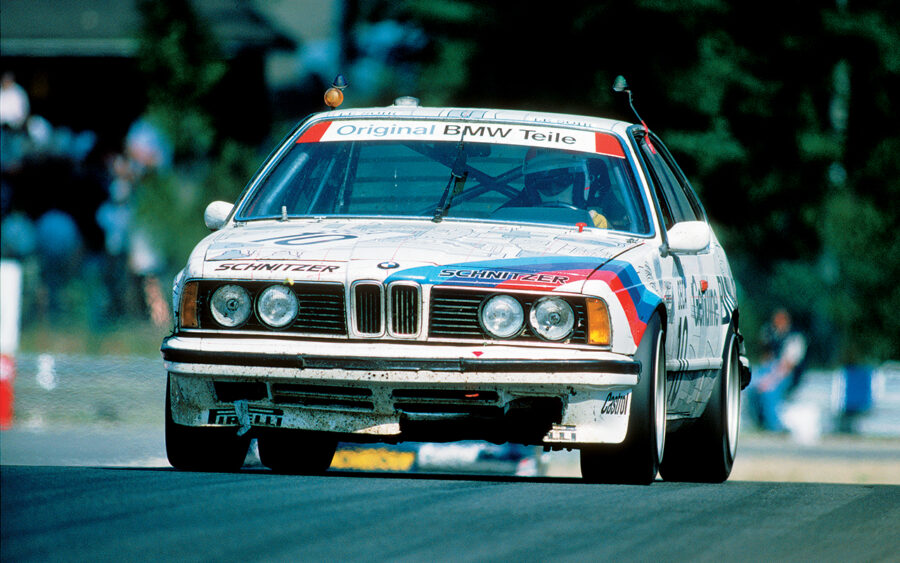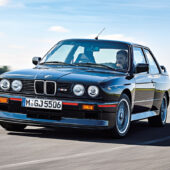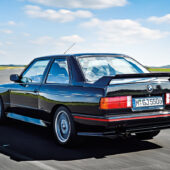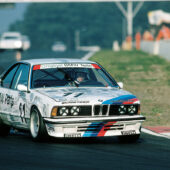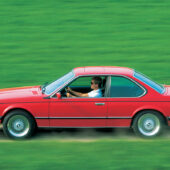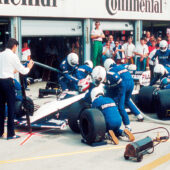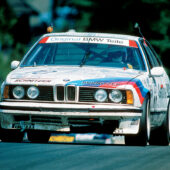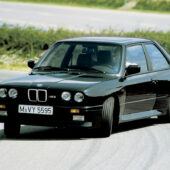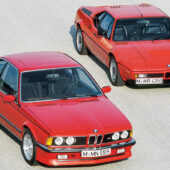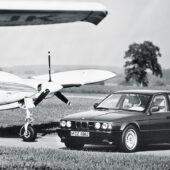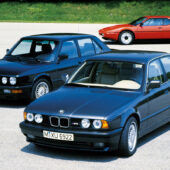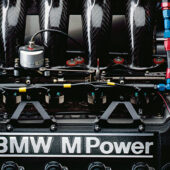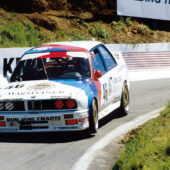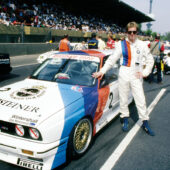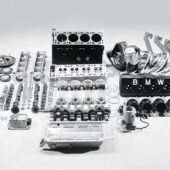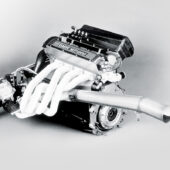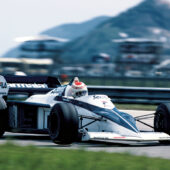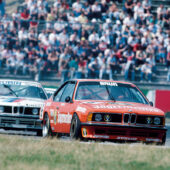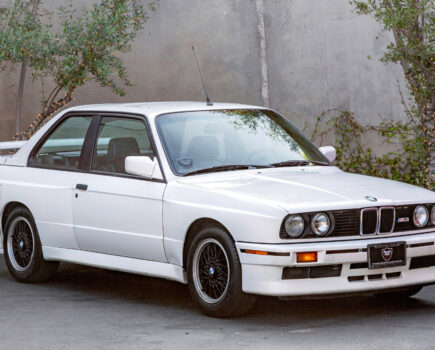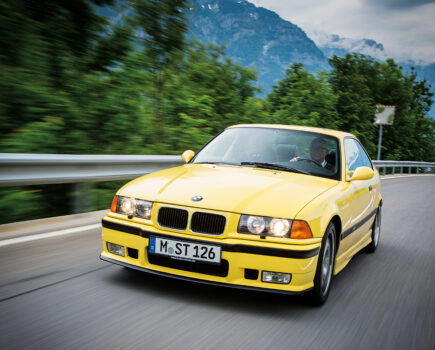BMW Motorsport had flourished during its first decade but the 1980s would see it blossom and prosper on and off track. Here’s how BMW M developed through the 80s
Words: Bob Harper
With the driven and ambitious Jochen Neerpasch having left the company at the end of the 1970s after falling out with the BMW board over his plans for an F1 campaign, it would have been all too easy for BMW Motorsport to have set its sights on less ambitious targets. However, Neerpasch’s successor, his former number two Dieter Stappert, fought tooth and nail to keep the F1 turbo project going. With the blessing of the Board, Paul Rosche (who had been general manager of BMW Motorsport since 1975) was tasked with taking the engine project forward, and on 24 April 1980 it was announced that BMW would be building and supplying engines for Formula One.
The 1,499cc racing four-cylinder, the M12/13, was based on the road-going M10 unit and utilised two- or three-year old blocks which were found to be stronger than new ones. With a KKK turbocharger and some rather special 102 octane fuel from BASF the engine could reach up to 1,400hp on the dyno but was wound down to ‘just’ 1,000hp for race day in an attempt at reliability. A huge number of engine failures followed but a tweak to the mixture improved things; BMW and Braham went into the 1983 season feeling moderately confident that, at the very least, the engine wouldn’t grenade itself at every race. By the end of the season, Nelson Piquet was F1 world champion and the BMW M12/13 engine was the first turbo unit to take the F1 world title 630 days and 27 Grand Prix after it appeared on a race track for the first time.
While not coming easily, there was no doubt that on-track victories were proving to be one of BMW Motorsport’s fortes; it was time to set about turning that success into sales. The BMW M1 and M535i had both been very well received but their combined sales numbers were around the 2,000 mark, hardly enough to trouble BMW’s spreadsheets. Three new machines were developed: the E24 M635CSi, E28 M535i and E28 M5, which made their motor show debuts in 1983, 1984 and 1985 respectively.
The 6 Series was already getting a little bit long in the tooth – it had been around since 1976 – and the arrival of a new headline model would be bound to give the range a bit of a lift, even if it’s M635CSi moniker could lead to a bit of confusion. Was it a real M car or not? Lifting the bonnet and seeing the black crackle twin cam head sealed the deal as the M6 featured a revised version of the M88 six-cylinder that had been used in the M1 and thanks to Bosch management and injection it was now good for 286hp and a 0-62mph time of 6.4 seconds.
It wasn’t just the engine that was upgraded; the MacPherson strut and semi-trailing arm suspension was fine-tuned by Gerhard Richter with new springs and dampers, while the brakes were uprated too. Unlike the E28 M5 that was hand-finished at M’s HQ, the M635CSi was assembled with the rest of the E24 models at the Dingolfing plant, which may go some way to explaining why they have a chassis number starting with WBA (now solely used for non-Ms) rather than the WBS BMW M chassis designation. Road testers loved it, with Autocar commenting: “The M6 isn’t short of charisma. Occasionally, a model is built that you just know will one day become a classic. The M6 is such a car.”
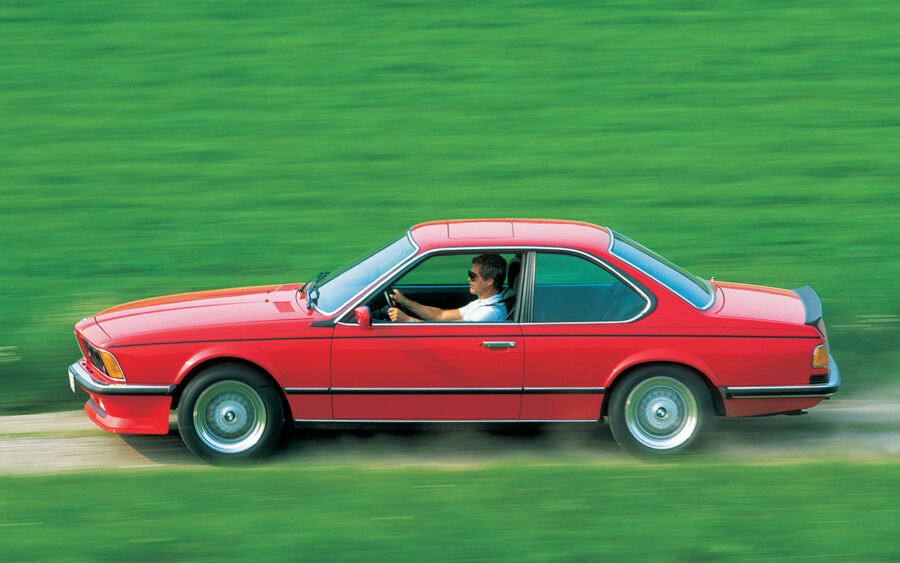
Good as it was, the BMW M6 was hugely expensive and lacked mass market appeal; enter the E28 M535i. Admittedly it was still an expensive car, but undercut the coupe by a good £15,000 and so was certainly more affordable. Based on the second generation of the 5 Series, the M535i would set the template for generations of cars that would follow – although it’s probably fair to say that the M content of later machinery has been further diluted.
By this time in BMW Motorsport’s history it had been loosely divided into four departments: M Power was responsible for Motorsport engines (road and race), M Technic concentrated on technical upgrades such as chassis revisions and aero parts, while M Team was the racing department and M Style concentrated on branded non-car accessories.
In Germany the BMW 535i was already a production model so it was left to BMW M Technic to breathe some M magic into it. The SOHC M30 engine was left as it was but there was a comprehensive upgrade of the interior, exterior and the suspension. Most obvious was the M Technic exterior embellishments which weren’t desperately subtle with new front and rear bumpers and lower valances along with chunky sill extensions and a rear spoiler, too. It was well received with Motor saying: “It’s a seriously fast car with seats for four big people and their luggage and secure, entertaining handling in the dry. Its engine is superb, its ergonomics faultless and its driver appeal sky high. For less than 20 grand, you can’t do any better.” Over 10,000 would be built worldwide by the time production ended.
While the BMW E28 M5 was a much smaller seller – the M535i outsold the M5 by a ratio of almost five to one – it was a sublime machine and set out BMW’s stall as the manufacturer of one of the first true supersaloons. It utilised the same mechanical make-up as the M635CSi but was an exercise in subtle restraint when it came to styling. Sure, there was a deeper front valance and a set of larger alloys, but that was about it for home-market cars that did without a rear spoiler or the subtle wheel-arch extensions. The car could be ordered with the M535i’s M Technic bodykit if you wanted to shout that you had bought the fastest and most expensive 5 Series.
Discrete it might have been but the M5’s performance was sensational and its handling was equally enticing. M was expanding a quite a rate by this time and it needed a bigger premises, so the E28 M5 was hand-finished at BMW’s Motorsport facility at Preussenstrasse up until 1986, and after that at M’s new home at Garching that it still occupies today. The hand-built nature of the E28 (finished bodies were shipped to M for the engine, gearbox, suspension and interior to be fitted) meant that the options list was extensive, with many bespoke items available to E28 buyers that weren’t on offer to E24 customers. Just over 2,000 E28 M5s were built making it the rarest of all the M5s – and some would say it’s still the best.
No doubt these new M cars with their multi-valve engines would have made sensational race cars but sadly for BMW Motorsport they weren’t built in sufficient quantities to meet homologation requirements, which meant that BMW used the regular 5- and 6 Series in touring car racing. Of the two it’s the BMW 635CSi that was campaigned most extensively and it was the more successful of the pair. Strict Group A regulations meant that race transmissions and 24-valve heads were outlawed; the big 6 Series was somewhat hampered by its weight and power deficit to some competitors. As the 6 Series race programme was starting to take off BMW was in the middle of its F1 campaign, so engine development was left to Alpina – and latterly to Schnitzer. Its 285hp was a decent effort but the car’s pièce de resistance was its reliability, especially over longer distances. Before it was retired the mighty E24 took three ETCC driver’s titles, won the first-ever DTM championship (despite not winning a race!), and bagged three Spa 24 hours wins and two at the Nürburgring 24 hours.
However, by the time the 6 Series had won its last titles in 1986, the venerable E24 was already 10 years old and packed with aging technology. The big coupé might have continued in production for another three years but if BMW was to remain competitive on track it would need an altogether more focussed machine.
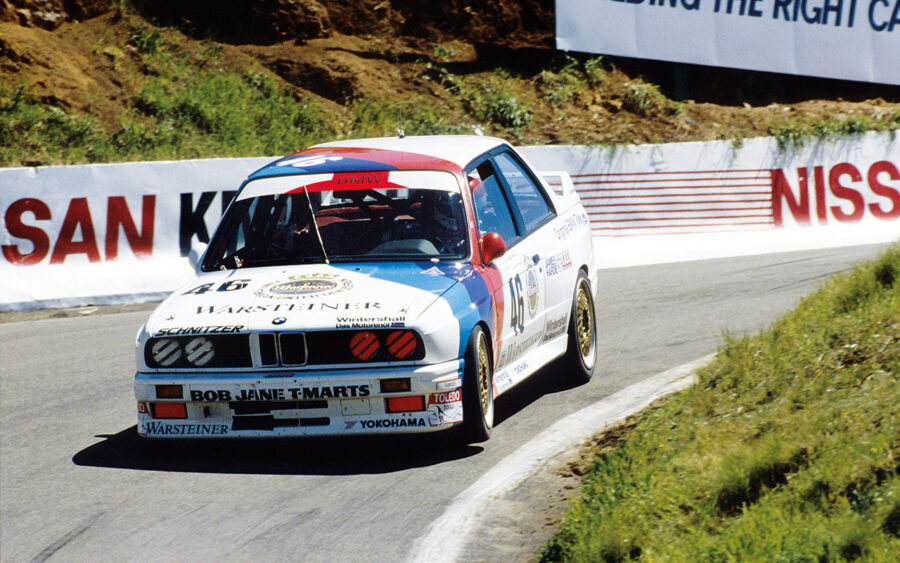
The E30 M3 became one of the most successful Group A touring cars
Enter the BMW E30 M3, perhaps BMW Motorsport’s crowning glory. Based on the E30 3 Series road car, it was extensively re-engineered for its racing application and originally a production run of just 5,000 examples was envisaged so it could pass the Group A homologation requirements. In the end over 17,000 examples were made, such was the car’s appeal.
At its first competitive outing in 1987, six M3s qualified in the top seven grid spots for the first round of the World Touring Car Championship (WTCC) at Monza and there must have been a collective sigh of relief in Munich – it was going to be a decent race car after all – and when the M3s crossed the line in a 1st through 6th whitewash, the celebrations at M’s new Garching HQ must have been a sight to behold. Subsequently having all six cars disqualified for having illegal roof panels must have taken some of the shine off the inaugural WTCC event, but the most important thing was that the M3 was going to be competitive.
In its first season in 1987 the BMW M3 blitzed the opposition with Roberto Ravaglia winning the WTCC, Winni Vogt taking the European Touring Car Championship (ETCC) and Eric van de Poele bagging the German Touring Car Championship (DTM) title. It was also the European Hill Climb champion, won National Touring Car championships in Austria, Sweden and Switzerland, and to show that it wasn’t a one-trick pony, it also won the Spanish Rally Championship as well as the Corsican round of the World Rally Championship. To prove its reliability, the M3 also won the Spa 24-Hour race. The M3’s place in the pantheon of truly great race cars was assured and over the ensuing years it would dominate just about everywhere it went.
The road car was no less awesome. Paul Rosche was responsible for the M3’s engine, a 2.3-litre 16-valve twin cam four-cylinder that was good for 200hp in road-going guise and could rev to 9,000rpm on track. A six-cylinder was tested but ultimately the four-pot was chosen to endow the M3 with better handling characteristics. The engine was mated to a five-speed dog-leg gearbox and a limited-slip differential but it was perhaps the suspension changes that were so crucial to the M3’s success. The front suspension geometry was considerably altered from the standard 3 Series with a lot more castor in the setup; front and rear anti-roll bars were beefed up and the front anti-roll bar had new pivot points outside the spring strut for added stability. Shock absorbers were bespoke Boge twin-tube gas pressurised items and springs were shortened and uprated, while the rear trailing arms were relocated for improved handling. Chunkier stub axles were sourced from the 5 Series (as were wheel bearings and the brakes), and unlike the rest of the 3 Series range the M3 sported five-stud hubs.
The icing on the cake was the adoption of a much quicker steering rack for the M3. The standard E30 had a somewhat ponderous rack that called for plenty of wheel twirling if the rear end stepped out of line, so the 3.6 turns lock-to-lock for the M3 was a pleasant surprise after the 325i’s 4.5 turns. There were extensive body revisions too, with blistered arches, new front and rear bumpers and valances, while the rear screens and bootlid were reprofiled for improved aerodynamics and the front and rear screen were bonded into place for improved rigidity. It was an instant hit, with Autocar pronouncing that the changes had “produced a 3 Series that steers tautly, rolls little and, above all, handles neutrally. This car is a treat, and a revelation, to drive.”
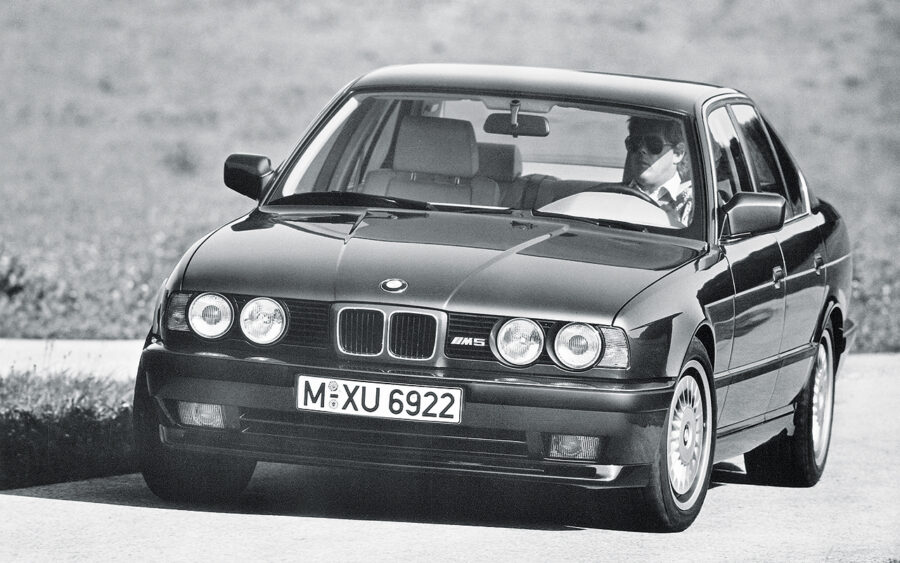
The E34 M5 rounded out the decade nicely when it arrived in 1988
BMW Motorsport had one final trick up its sleeve before the 1980s rolled into the 1990s: a replacement for the E28 M5 based on the E34 that had made its debut in 1987. The new M5 made its home market debut in 1988 but RHD markets would have to wait until almost the end of 1989 before they could sample the E34 M5. It used a 3535cc version of the previous car’s straight-six but it now went under the S38 moniker and could churn out 315hp. Naturally enough its underpinnings were heavily revised and featured self-levelling rear suspension along with a host of changes to the brakes and front springs and dampers. Externally it was almost indistinguishable from its lesser siblings although its turbine wheel rims might have set it out as something a bit special, as they were designed to draw cooling air onto the brakes at speed.
It was a hugely rounded and capable machine that drew on the E34’s improved refinement over the older E28 model, and as a result some members of the motoring press felt it was just that little bit too refined, missing some of the raw appeal of the E28 version. Buyers loved it, however, and the E34 M5 outsold the E28 M5 by a factor of four to one.
As the 1990s dawned, BMW had some more incredible cars in the works – but none would have been possible without BMW M’s roaring successes in the 1980s.

